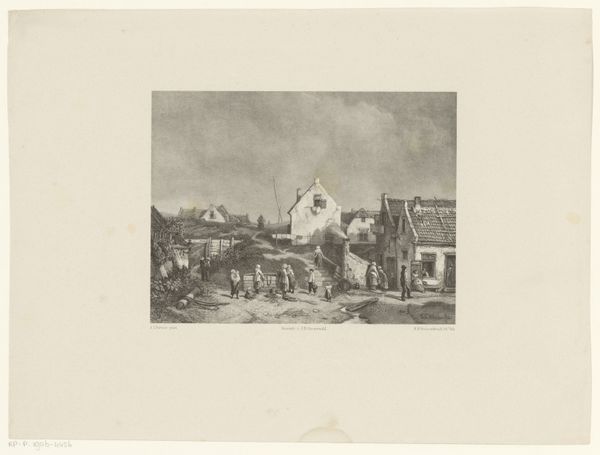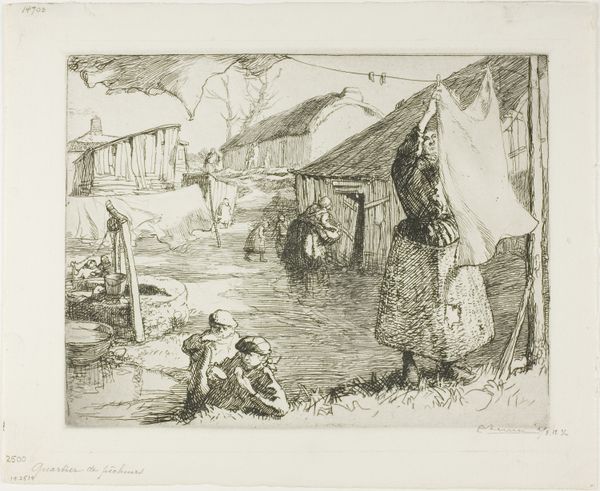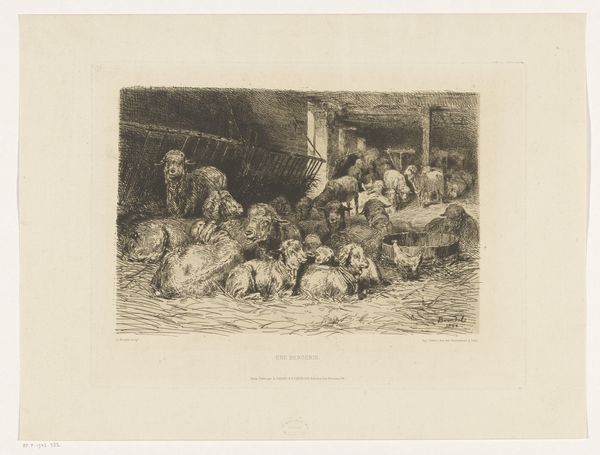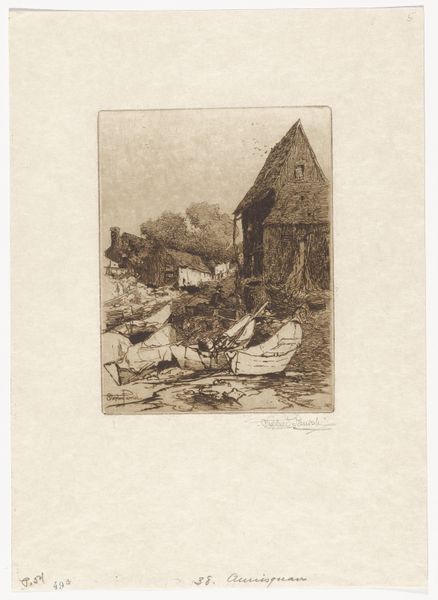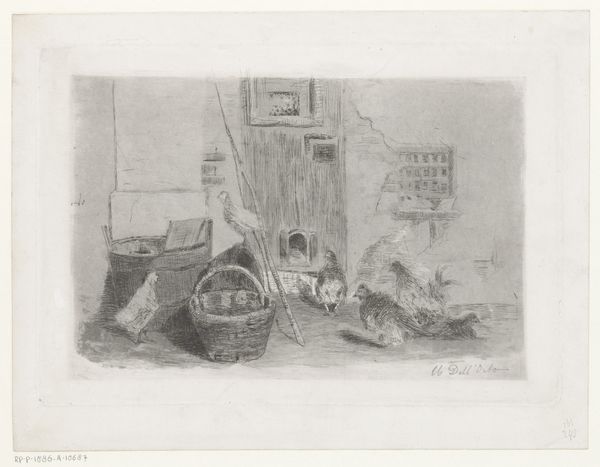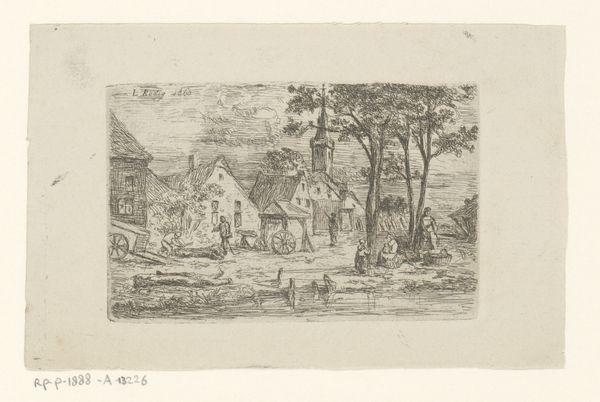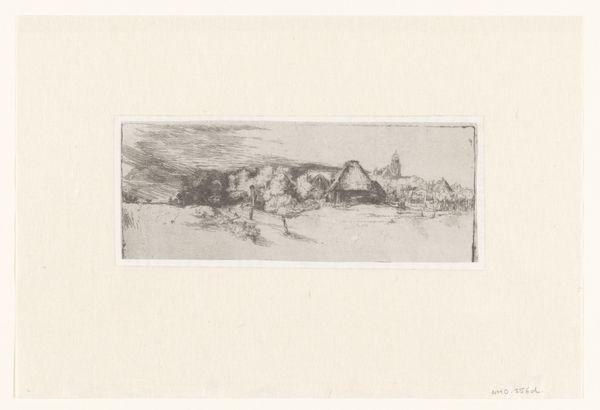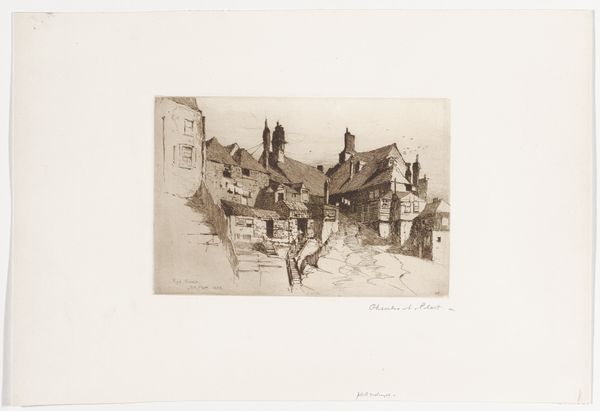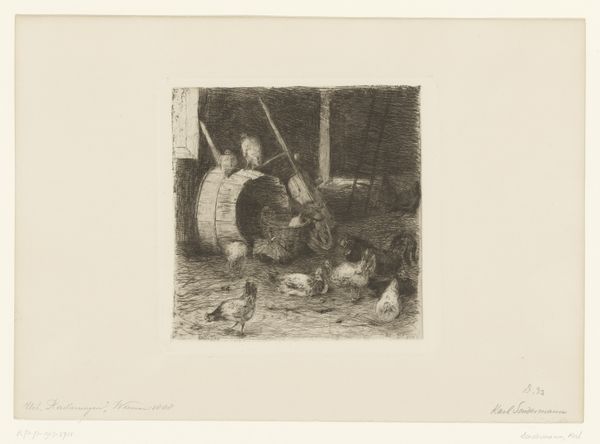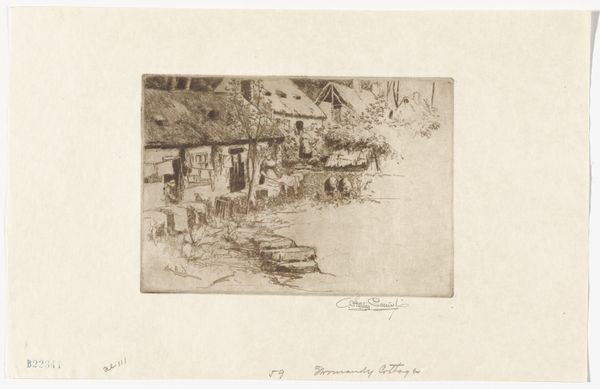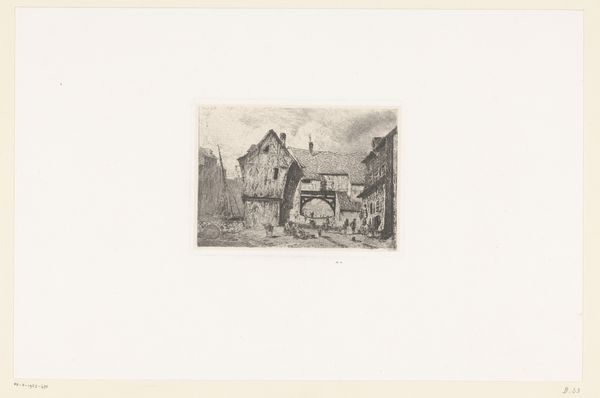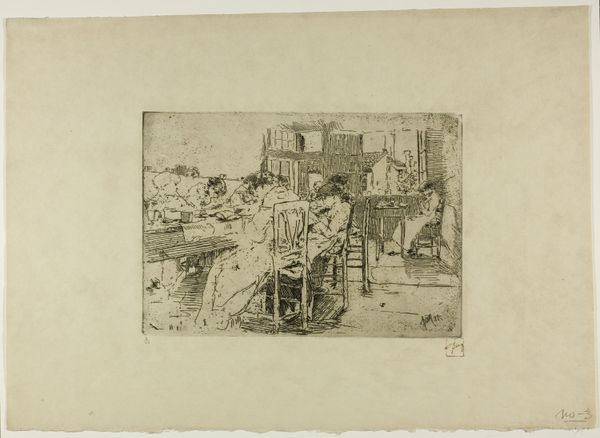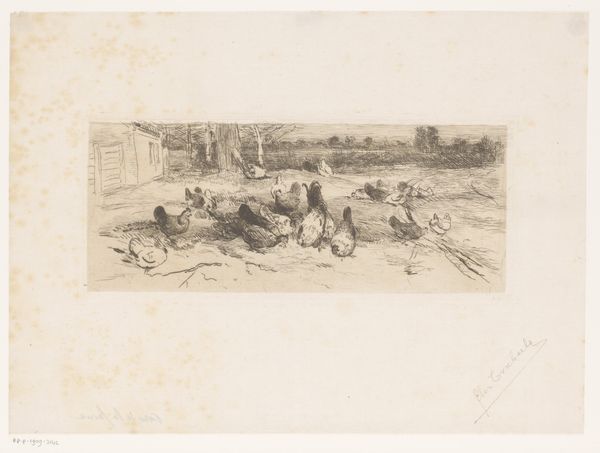
print, etching
#
art-deco
# print
#
etching
#
landscape
#
figuration
Dimensions: height 130 mm, width 168 mm
Copyright: Rijks Museum: Open Domain
Curator: Jean Emile Laboureur created this etching in 1926. Its title translates to "Resting Tennis Players on the Beach." Editor: Oh, what a serene snapshot! It’s a breezy day, and people seem blissfully unbothered by much of anything, even the sport they came to play. It feels quiet somehow, almost muffled, despite the activity. Curator: Indeed. Note how the artist structures the composition, contrasting foreground relaxation with background activity. The formal attire of the figures resting seems an intentional juxtaposition against the scene of a typical beach outing. The use of line in the etching contributes to the sense of both depth and flattened perspective, pushing and pulling our focus. Editor: The line work has this gossamer lightness, doesn't it? The beach houses seem to hover, light on their foundations. Those two figures reclining, seemingly exhausted from sport, invite me into their leisure. It’s almost dreamlike; I imagine the sound of distant laughter carried on the breeze. Curator: Dreamlike, yes, because the print possesses an interesting tension. Formally, the piece leans heavily into Art Deco aesthetics. The carefully arranged details suggest an almost staged quality that speaks to its time. Note how Laboureur has subtly incorporated a sort of semiotic language—for example, in his depiction of clothing and activity—to depict status and social ritual. Editor: Perhaps the stillness, that quiet, is the exhaustion that follows true, satisfying play. The entire scene breathes a gentle "enough-ness." Or maybe, it captures a collective sigh as people relax after tennis under the sun, content simply to observe the world unfolding around them. This art makes me feel a nostalgia for an era I never knew. Curator: Your intuitive interpretation underscores how effectively Laboureur utilizes structure and imagery to convey this emotional resonance. The placement of figures creates spatial and psychological distance, which is crucial to the work's reception. It has been lovely delving deeper with you! Editor: For me too! Thanks for shining a light on it. It truly transports you.
Comments
No comments
Be the first to comment and join the conversation on the ultimate creative platform.
